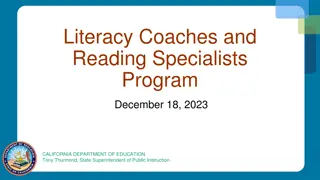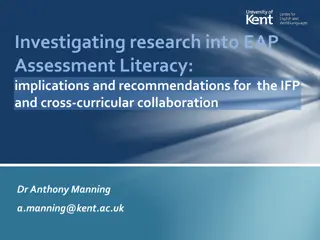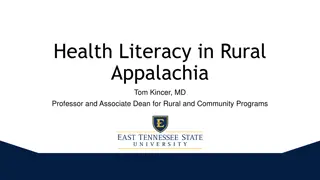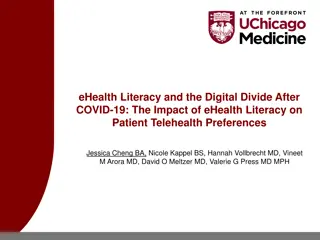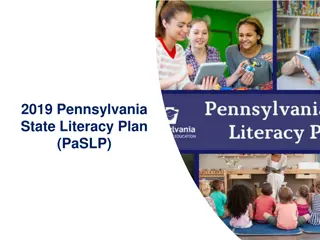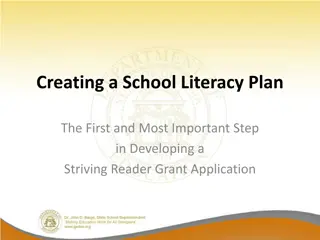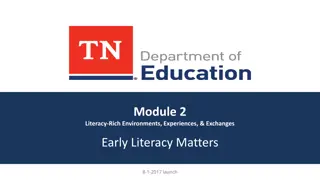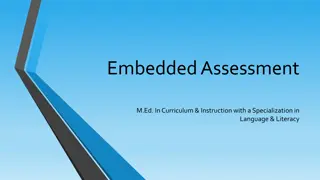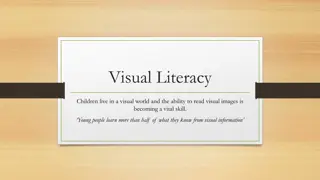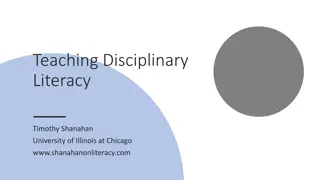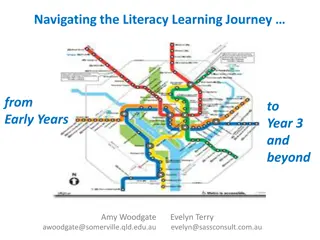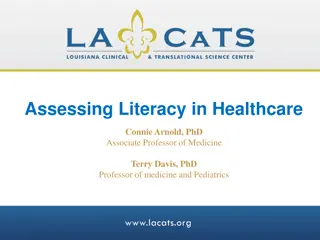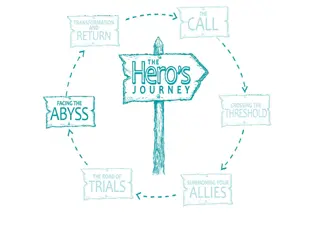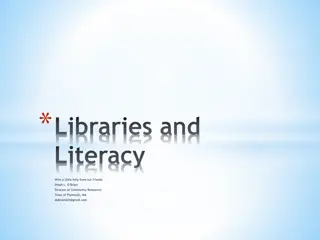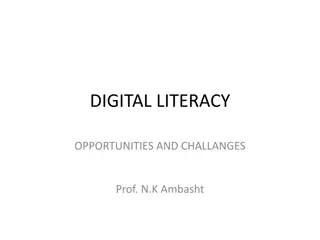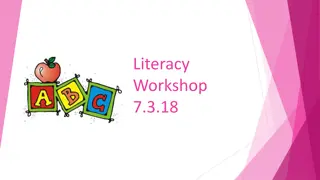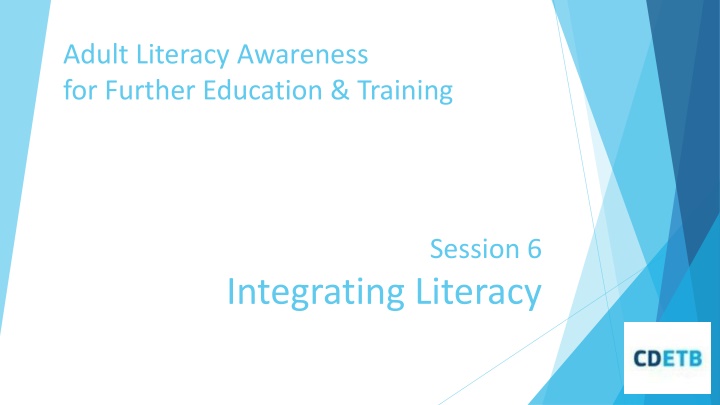
Integrated Literacy Practices for Enhanced Adult Education
Explore the significance of integrating literacy practices in adult education to promote learner success and build transferable competences. Understand the benefits, strategies, and implications of literacy integration across various educational settings. Join the conversation on integrating literacy for inclusive and effective learning experiences.
Download Presentation

Please find below an Image/Link to download the presentation.
The content on the website is provided AS IS for your information and personal use only. It may not be sold, licensed, or shared on other websites without obtaining consent from the author. If you encounter any issues during the download, it is possible that the publisher has removed the file from their server.
You are allowed to download the files provided on this website for personal or commercial use, subject to the condition that they are used lawfully. All files are the property of their respective owners.
The content on the website is provided AS IS for your information and personal use only. It may not be sold, licensed, or shared on other websites without obtaining consent from the author.
E N D
Presentation Transcript
Adult Literacy Awareness for Further Education & Training Session 6 Integrating Literacy
Extension Activity Reflecting on a lesson you have already created, consider how would you integrate the principles of good literacy practice and Univeral Design for Learning to make the delivery more literacy-accessible. Be creative about how the content is delivered. Allow options for assessment that can play to a variety of learning styles.
Aims Session 6: Integrating Literacy the value of integrating literacy across curriculum and courses, accredited and non-accredited Explore Query responsibility for literacy integration for whole centre and classroom based integration approaches Hear ideas
Why consider integration of literacy? What does literacy awareness and integration look like: In PLCs or Training Centres, where learners are generally working towards qualifications in vocational or subject specialist areas In the Community Education setting, where learners may be taking courses with minimal amounts of written coursework Aim of this session to explore the value of an integrated approach to literacy
Why integrate? Policy developments The FET Strategy (2020-24) Learner supports Integrated service Emerging themes in the ALNDS Strategy Literacy awareness Integrated supports EU key competences (2018) Integrating literacy supports development of competences which are transferable to the workplace, further study, personal goals and everyday life
Why integrate? Learner experience Knowing the literacy statistics in Ireland there is a likelihood that there will be some learners in your classroom/group who have unmet literacy needs A culture of inclusion and care ensues Increased learner motivation - learner success in early assignments can be built upon throughout the course/academic year The learner gains the skills and confidence to complete the course - learner retention is increased - increased certification rates Learner reflects on perception of self, critical thinking increases, increased confidence
Discussion In your experience, have you noticed learners struggle with any aspect of the literacy demands of the course you deliver? If so, how did you manage the situation? As an educator, how did you feel in this position?
Diagnosed Specific Learning Difficulties (Autism, Dyslexia, Dyscalculia) Comprehension challenges (difficulty understanding texts, questions or briefs) Commonly reported difficulties Writing difficulties structuring sentences and paragraphs* Language (either speaker of another language or unfamiliar technical terms)
Access to technology devices to produce the work required Confidence/beliefs about the self, relating to some/all of the above More reported difficulties The processes involved in managing academic material, learning and producing coherent responses to tasks required (learning to learn)
Utilising Blooms Taxonomy when creating briefs and assignments When writing or devising the task/assignment: Think about the learning outcome and whether the evidence requires a demonstration of understanding or something more complex, structure questions according to the verbs in Bloom s Taxonomy When writing the brief: Think of a brief as the scaffolding a learner requires to attempt their assignment and task, use plain English, and step by step clear instructions
What can the classroom teacher do to integrate literacy? Be literacy aware, expect that some learners are having literacy difficulties Encourage dialogue as much as possible, encourage questions Try a non-threatening scan for literacy/numeracy difficulties (Handout 4.1) Identify the literacy demands of the course - create a glossary of terms and useful vocabulary Explain how to read (skimming, in-depth reading, note-taking while reading)
What can the classroom teacher do to integrate literacy? Explain writing approaches (explain mind-mapping, drafting, final versions) Create templates to scaffold assignments Use Bloom s taxonomy to scaffold the learner Know that this approach will be appreciated by the learners If it is available in your service, seek support from a literacy specialist https://www.fess.ie/resource-library/literacy-and-numeracy Lots of resources available at: https://www.fess.ie/resource-library/literacy- and-numeracy https://www.fess.ie/resource-library/literacy-and-numeracy
Whole centre approaches to integration A team is set up to draw up a policy for integration, this might involve programme managers, learning support staff, guidance staff The centre decides who will develop and manage the whole centre approach to literacy integration Who is responsible for literacy integration? The centre, supported by the ALO, provides training on literacy awareness and integration The approach to integrating literacy and numeracy is decided on and monitored A link is formed with a literacy specialist (local Adult Literacy Organiser) Possibility of ongoing support from ALO, depending on local services ETBI Framework, NALA Guidelines
Breakout room Reflecting on opportunities for integrating literacy within the class setting and within your wider organisation, identify some practical ways that you could support the integration process. What challenges exist to integrating literacy in the further education and training sector?
Course Evaluation 6 Sessions 1. Literacy Landscape, Theorists 2. Theorists, Causes and Impacts of Literacy Issues 3. Literacy Awareness & Creating a Literacy-Friendly Environment 4. Boundaries and Referrals 5. How Learning Works, Tips & Tools 6. Integrating Literacy

